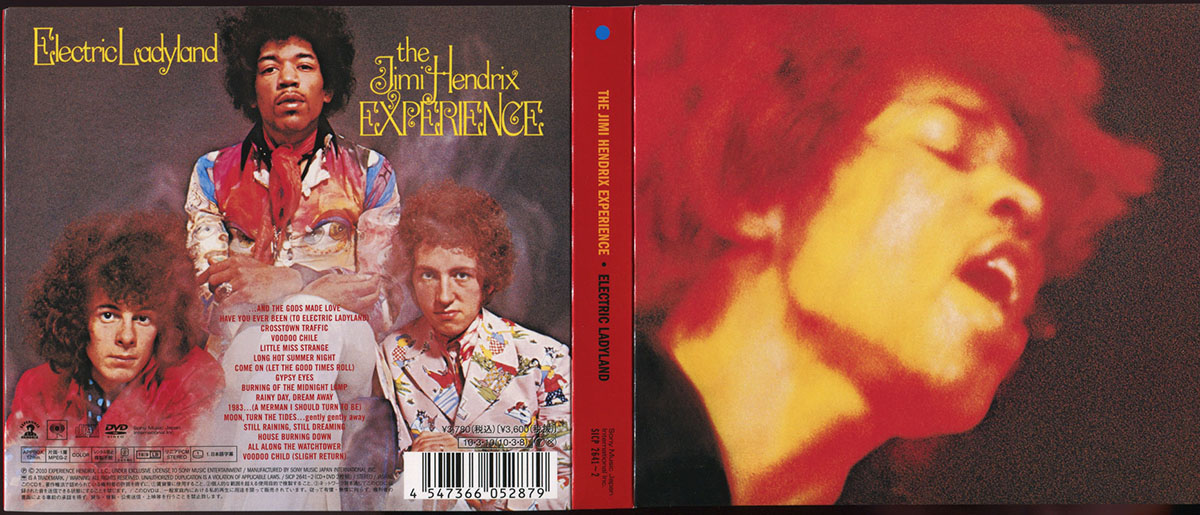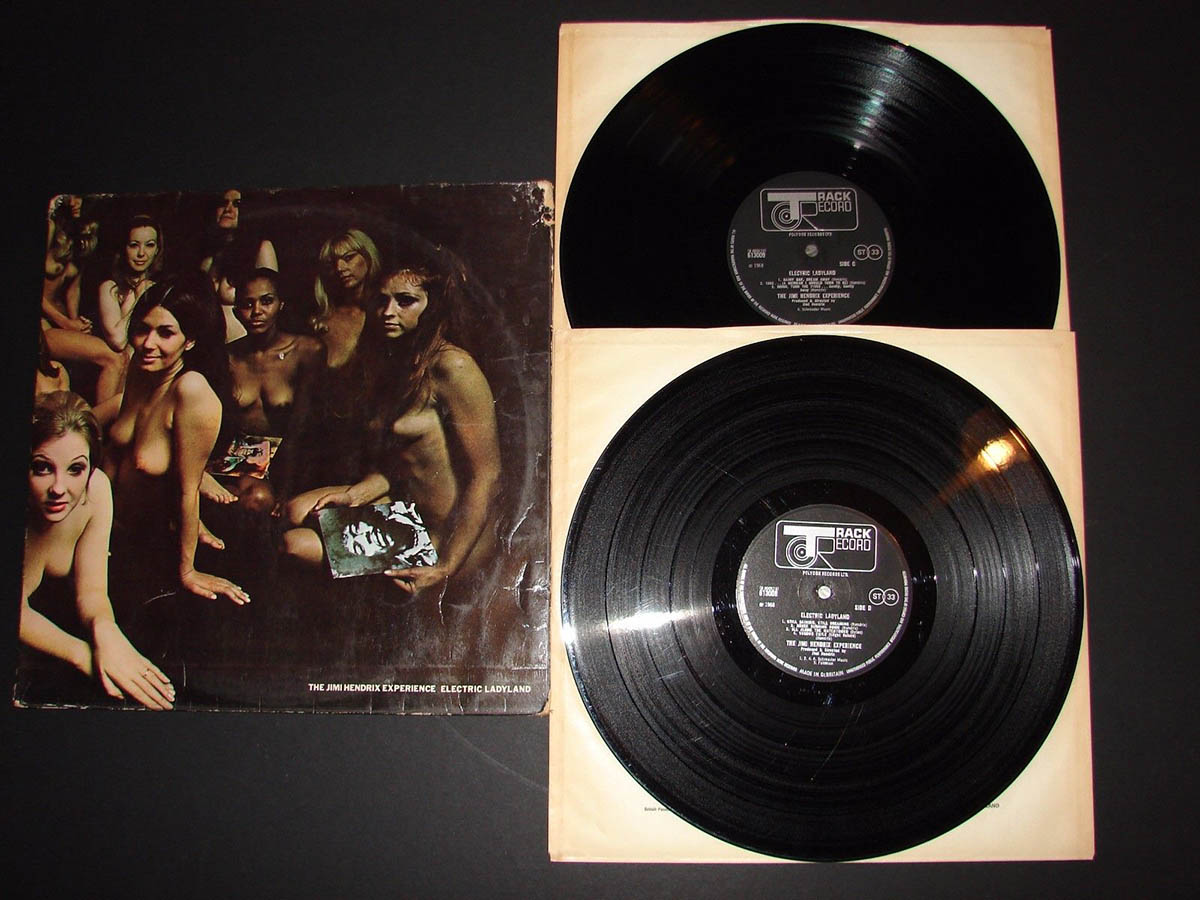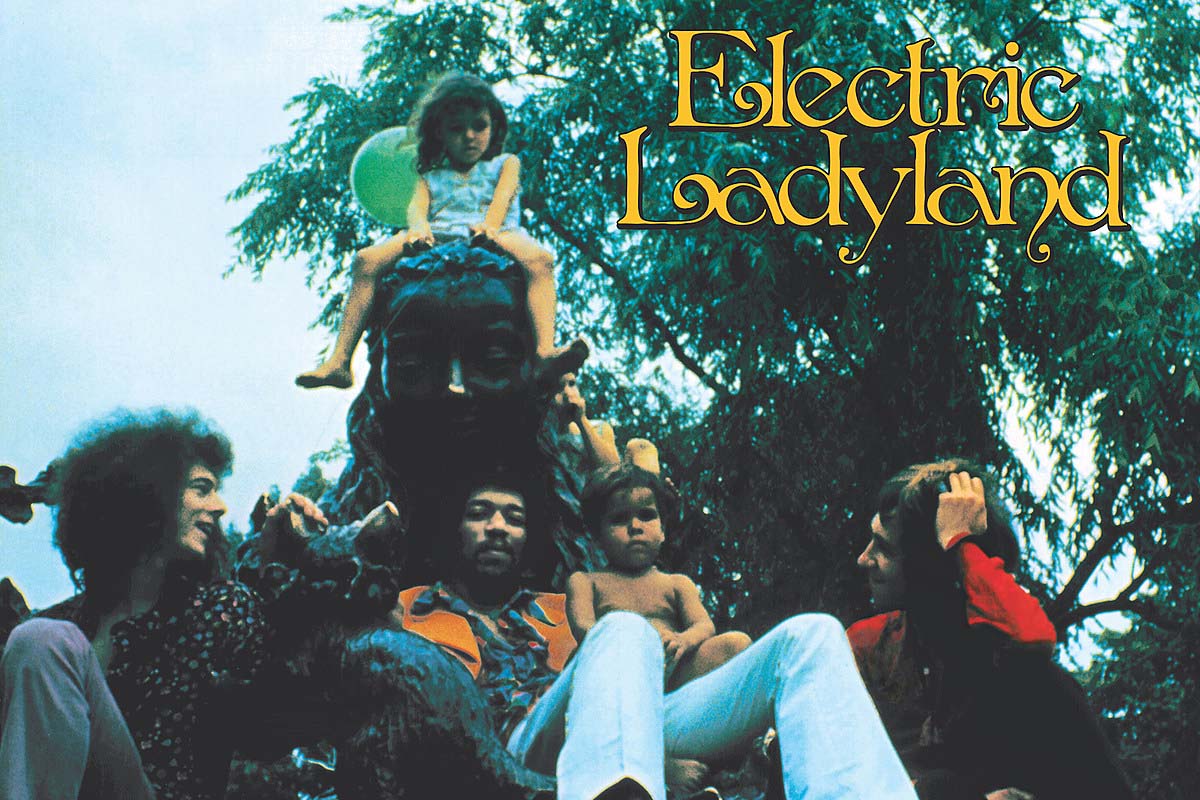Electric Ladyland (1968) - The Jimi Hendrix Experience: history and facts
Содержание
"Electric Ladyland" is the third album of The Jimi Hendrix Experience, which became one of the revolutionary albums in music history. It reached the top of the American charts in just a few weeks. It inspired many musicians and paved the way for the development of the psychedelic rock genre.
Creation process
The album was recorded from the summer of 1967 to January 1968. It was an intense creative process - some tracks, such as "Gypsy Eyes", were re-recorded more than fifty times. The Jimi Hendrix Experience changed studios in the process, travelling the world from America to the UK. Producer Ches Chandler even clashed with Jimi Hendrix - he was not satisfied with the perfectionism with which the latter demanded that the song be re-recorded again and again.

Interestingly, Hendrix had a specific perception of the recording process. Musicians who worked with them, such as Noel Redding, noted that recording the album was sometimes more like a party than a job. In some songs you can hear the voices of Hendrix's friends who were not involved with the band, such as in the track "Voodoo Chile".
Formalisation
The album cover was really scandalous. Even Hendrix himself did not agree to release the first version, but the record company still released the album under this image. On it you can see random women of provocative appearance, who were invited to the shoot right off the street. The Experience themselves insisted that the album cover be a photo of the band in front of a sculpture of the fairy-tale Alice in a London park, but this was rejected.

However, because of the provocative cover, some shops refused to sell the record, so the record company had to make concessions and change the design - the cover featured a blurred portrait of Jimi Hendrix himself. Nevertheless, the scandal after the album's release increased sales rather than decreased them - in a short time "Electric Ladyland" became one of the best-selling records in the USA. The album became so legendary that the New York studio where it was recorded even changed its name to Electric Ladyland.

Release and Criticism
The official release took place on the 16th October 1968, and by mid-November the album had already topped the US music charts, where it stayed for more than two weeks. In the UK it was a number one hit for even longer - more than three months.
The best-selling track of "Electric Ladyland" was a cover of "All Along the Watchtower", which was received with equal enthusiasm by both ordinary listeners and music critics. In general, many experts noted that the album was too unstructured, but the composition "All Along the Watchtower" was called one of the best songs of all time. Over time, critics' perceptions of the album have changed - they praise not only the individual tracks but also the album as a whole, calling it one of the most important in music history and marvelling at the experiments Hendrix dared to do, creating a very interesting combination of rock, blues and electronica.
...And the Gods Made Love
Experimental track that opens the album. The listener is waiting for almost a minute and a half of unreal cosmic sounds that set the tone for the whole record. Under the instrumental sound of "...And the Gods Made Love" it is easy to sink into meditation.
Have You Ever Been
In the British edition, the song was called "Electric Ladyland". It is a lyrical song, which is considered to be partly autobiographical - Jimi Hendrix described his romantic relationship in it. The sound of the song has been compared to such legendary tracks of the band as "Little Wing" and "Spanish Castle Magic".
Crosstown Traffic
The album's third song, which was released as a standalone single and reached number 52 on the Billboard Hot 100. It was recorded using a kazoo that Hendrix created out of a comb and paper.
Voodoo Chile
One of Jimi Hendrix's most unusual tracks, both instrumentally and lyrically. Critics have called "Voodoo Chile" an amalgamation of different blues styles. It is the musician's longest recording - it lasts fifteen minutes. There is a deliberate typo in the title - the composition should have been called "Voodoo Child". It can be noted that the composition combines two of Hendrix's greatest passions - blues and science fiction.
Little Miss Strange
A song co-written with Noel Redding. A lyrical composition poetically describing a relationship with a mysterious girl about whom it is difficult to know even whether she is real or illusory.
Long Hot Summer Night
Hendrix's emotional composition about separation and love that can overcome distances. The bluesy sound characteristic of the musician's work fully corresponds to the album's style.
Come On
The second title of the song is "Let the Good Times Roll". It was written by Earl King, but the song had always been close to Hendrix, and he had performed it in a school rock band in his youth. The musician managed to reinterpret the song, and his arrangement of "Come On" reached the top of the charts.
Gypsy Eyes
The recording of the song was very hard work, it was re-recorded over fifty times in total. Together with "Crosstown Traffic" it was released as a single and reached the Billboard Hot 100.
Burning of the Midnight Lamp
The backing vocals were performed by Sweet Inspirations, an American R&B band. Work on the song lasted almost three months, during which Hendrix repeatedly rethought its sound and meaning. "Burning of the Midnight Lamp" is a song about loneliness and the search for the meaning of life. As Hendrix admitted, it is a very personal piece of music, accurately reflecting his emotional state.
Rainy Day, Dream Away
A positive song with an unusual electronic sound. "Let it drain your worries away", urges the musician. The sound of "Rainy Day, Dream Away" really makes you forget about your worries for at least four minutes that the track lasts.
1983... (A Merman I Should Turn to Be)
The second longest track by the band - it lasts thirteen minutes. In the song you can hear the sound of the flute, played by Chris Wood. Many critics call the song the climax of the album. The composition is very emotional - in it you can see both hope and despair at the same time. The world is changing, and Hendrix felt the need to change with it. His lyrical hero found the mysterious Atlantis, and found peace of mind. Hendrix encourages the listener to go in search of a personal Atlantis.
Moon, Turn the Tides....Gently Gently Away
Atmospheric instrumental composition. Electronic sound is reminiscent of the sound of the surf and distant night sounds of the city.
Still Raining, Still Dreaming
A kind of continuation of the song "Rainy Day, Dream Away". They are related both in sound and content. "Lay back and groove on a rainy day" is a line that is repeated throughout most of the song. There are a lot of energetic musical inserts in the song, energising it.
House Burning Down
A bright composition with energetic guitar riffs. Particular attention is drawn to the lyrics of the song, describing a kind of apocalypse and rebirth of the world, both literal and metaphorical.
All Along the Watchtower
A cover of a song by American singer Bob Dylan. After hearing "All Along the Watchtower" performed by Hendrix, Dylan himself was very impressed and said that "The Jimi Hendrix Experience" managed to see the song in a way that no one had ever seen or performed it before. The composition became a hit and Hendrix's most popular song in the United States.
Voodoo Child (Slight Return)
Another version of the song "Voodoo Chile", which was even more successful than the original version. This recording became Hendrix's calling card. He often performed "Voodoo Child" at concerts, and it was also featured on his new albums, topping the UK charts.
According to "The Times", "Electric Ladyland" is ranked 10th among the top 100 albums of all time.



